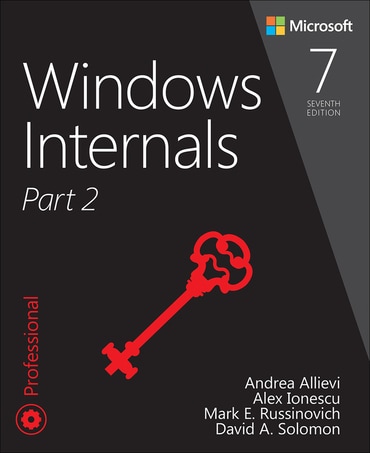Switch content of the page by the Role togglethe content would be changed according to the role

Windows Internals, Part 2, 7th edition
Published by Microsoft Press (August 31, 2021) © 2022
- Andrea Allievi
- Alex Ionescu
- Mark E. Russinovich
- David A. Solomon
$57.99
- Available for purchase from all major ebook resellers, including InformIT.com
$57.99
- Available for purchase from all major ebook resellers, including InformIT.com
Title overview
Drill down into Windows architecture and internals, discover how core Windows components work behind the scenes, and master information you can continually apply to improve architecture, development, system administration, and support.
Written by a team of renowned Windows experts, this classic guide is now fully updated for the latest releases of Windows. As always, it combines unparalleled insider perspectives on how Windows behaves “under the hood” with hands-on experiments that let you experience these internal behaviors firsthand.
Part 2 examines these and other key Windows 10 OS components and capabilities:
- Startup and shutdown using UEFI and secure launch with measured boot
- The registry
- Windows management and tracing mechanisms such as WMI and ETW
- System mechanisms such as ALPC and WNF
- The cache manager
- Windows file systems such as NTFS and ReFS
- Hyper-V and virtualization-based security (VBS)
- The Universal Windows Platform (UWP) application model
Revised throughout, this edition also contains these entirely new chapters:
- Virtualization technologies
- System mechanisms
- Management diagnostics and tracing
- Caching and file system support
- Startup and shutdown
